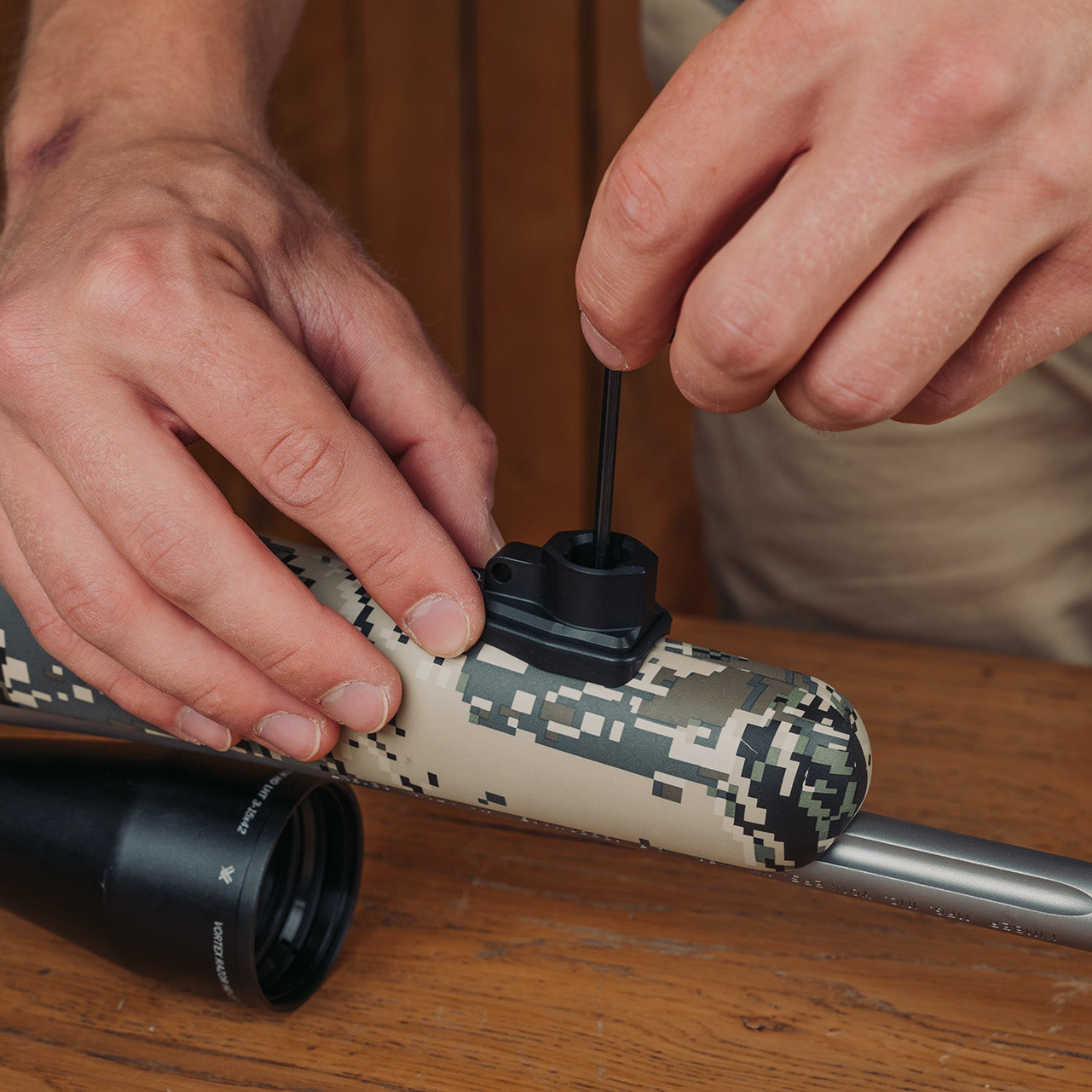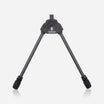This winter my dad unexpectedly passed away, and unintentionally left a valuable lesson about hunting. Even though it’s been 6 months, my fingers still struggle to type about his final two-week battle after a stroke took away his ability to talk or even swallow. Sitting through this ordeal with him was profoundly humbling because in the end, all the daily chores and material possessions we get wrapped up in meant little. The most significant moments were conversations about adventures our family had together. After witnessing how death reduces everything to experiences and memories, maybe we ought to be thinking about how to get more of those. Have you ever seriously considered how many more opening days you have?
A friend of Spartan Precision Equipment, named Linden Loren, recently published a book about this very subject titled, “Your Hunting Healthspan”. Inside, you will discover 73 ways to age better and prevent disease. I found this book gives hunters practical strategies to work on their entire physical and mental wellbeing. Wholistic and hunting are subjects not usually associated, but perhaps they should be? From his writing, our team of Spartans have pulled out three of the most beneficial physical exercises for backcountry hunters that will enable you to do what you love for longer.

Linden Loren’s book explains 73 options for making ourselves stronger inside and out.
Think on that for a minute. Your new First Lite gear, the Swarovski binoculars you saved for, and long-awaited Wyoming elk tag will mean absolutely nothing if you’re not physically able to use it. Hunting healthspan is the amount years you will be able to get out in the field like you are accustomed to. Mine was something I never gave a second thought to, until an accident at 23 broke my neck at the C6 vertebrae and left me a quadriplegic. While there isn’t much that can be done about freak occurrences like this, there are a tremendous number of simple strategies you can start employing right now that will make a noticeable difference in the quantity and quality of days you get to spend afield.
Here is a sample of how Linden approaches a total body preparation strategy. “The last straw theory is one of the areas of biomechanics that merits discussion. As you reach down to grab your hunting pack—which isn’t usually heavy for you—you end up straining a muscle on the side of your lower back. According to the last straw theory, reaching for the pack may not have actually caused the injury” (Loren 74).
From his book, we curated 3 ways to get more opening days. The idea is to give hunters easy-to-implement exercises to help prevent the most common injuries and issues that can ruin your trip.
Physical Tip #1: Foot Speed to Prevent Falls
“Realistic scenarios where a hunter might recover and catch themselves to prevent an accident or trip, and develop a new health limitation due to slow foot speed, include crossing a log, skinning wild game, and walking in the snow or rain. Foot speed helps us change directions, which increases agility and reaction time in the field. The likelihood of suffering an injury from a fall and slow foot speed rises with age. To lower the risk of falling, we must take proactive measures to speed up our feet. Increasing our foot speed could extend the years of hunting we experience considering different terrain variables are common when hunting in the woods” (Loren 62).
Examples of movements to improve foot speed:
• Ice Skating
• Lateral Box Jumps/Steps
• Jumping Lunges
• Ladder Work
• Jump Rope
• Cone Drills
Our own Rob Gearing is no spring chicken, but the extreme locations he’s still able to explore make you wonder how he does it. Sure, he’s got good gear, but the most valuable thing he’s done is a hunter modification. He never quit working out. Would you like to be able to go on badass trips like Rob’s caribou hunt in Greenland when the rest of your buddies are considering shoes with Velcro? Incorporating a couple of the above exercises into your weekly routine ensures your hair will give up long before your body does.

Physical Tip #2: Rotator Cuff Stability
Paying attention to strengthening this part of your body is something I cannot emphasize strongly enough! A rotator cuff is something I never thought twice about until becoming a wheelchair user. Now instead of using my legs to move, I use my arms and shoulders for everything. Years of exercising at too high of a resistance level, plus hoisting my body in awkward positions had left my shoulders in so much pain that I thought surgery was the only option.
Luckily, some local fitness trainers gave me similar advice to what Linden advocates. After a year of consistent range of motion stretches and resistance training, I was able to get rid of the pain and regain mobility. Turning down the friction on my recumbent bike, doing lots of range of motion stretches, and training with a TheraBand all combined to make a measurable improvement. I wish I would have invested time into this preventative body maintenance before I hurt myself. Now is a perfect time for you to begin so that you can be free to hunt hard for many more opening days.
“During our hunt, our shoulders take center stage, whether we are holding a rifle, setting up a tent, drawing a bow, or moving brush above our heads. Having a stable rotator cuff is important for keeping healthy shoulders. The rotator cuff consists of four muscles surrounding our shoulder blades (scapula). They work together to stabilize our shoulder joints and allow us to move without suffering injuries. Our shoulders can often become stiff and restricted during life. The causes of many of these painful shoulder limitations include poor postural alignment, repetitive movements, muscle imbalances, unintentional injury, under-training, and overloading with too much resistance. Improving rotator cuff stability puts our shoulders in a better position to handle both daily activities and the strenuous activity of a hunting trip” (Loren 66).
Examples of movements to improve rotator cuff stability:
• Resistance Band Rotations
• Inverted Rows
• Snow Angels
• Plate Retractors
• Cable Pulls
• Reverse Flys

Consistently doing exercises like this weighted range of motion routine has given the author’s shoulders a second life.
Physical Tip #3: 16:8 Method for Losing Weight
Extra weight is the enemy of performance, be it on your gear or yourself. How many thousands of dollars in titanium and carbon fiber would it cost to upgrade your backcountry gear to be 5-10 pounds lighter? We often preach that swapping out the typical boat anchor of a bipod for our 6 oz Javelin Pro Hunt is the quickest way to drop half a pound off your shooting rig, but I’m well aware it’s not a cheap route. I found a free way to trim weight by focusing some on what I eat, but more on when I eat.
Intermittent fasting is choosing to ingest calories during a specified time window, and consuming zero calories during the remaining time span. Linden’s 16:8 method means that for 16 hours you don’t eat or drink anything with a calorie, because that would break your fast. Then you can consume food and beverages with calories for an 8-hour time window. There’s a whole science behind this on how your body transitions to burning fat after you don’t feed it for about 12-14 hours. When I started this habit three years ago, I used his 16:8 guideline. Over time I’ve improved it to an 18:6 ratio. At first it sounds unattainable, but I was surprised how rapidly the body acclimates to it.
My regimen is to have coffee with nothing in it during the morning, begin eating at noon, and be all done with dinner around 6. This self-imposed set of rules makes it easier to say no to desserts or after-dinner drinks. Since I committed to being done eating by 6, I don’t have to wobble back-and-forth on the decision because it’s already been done for me. You can still have breakfast. Take the same food we are used to eating in the morning, and instead cook it at noon. I don’t beat myself up if this schedule gets moved around a bit, and this flexibility enables me to sustain the habit. Linden’s book does an excellent job of delving into all the details on how fasting improves your health (increased cognitive abilities, better aging, improved gut health, etc). For me, it’s the simplest way to shed 5 pounds and keep it off.

Linden Loren dedicates his life to a healthy diet, exercise routine, and mental wellbeing so that he can extend his hunting healthspan.
His book is a worthwhile read because you will also find strategies for sleeping better, how to crush anxiety and stress, uncovering your purpose, staying mentally tough during hunts, and much more. The overall feeling I took away is every hour you get to spend afield is sacred. Between your job, family, kids, keeping up the house, and all the offseason training, it seems like it takes three days of preparation for every one day you get off. It’s totally worth doing the exercise now so you’re not sucking wind and nursing injuries during the adventure you’ve been waiting for. We are often told that time is the one thing we cannot get more of. I think if we’re willing to start doing a few things different, we can prove this statement wrong. Extending the length of our life plus the quality of each year sounds like a win-win to this Spartan.
Guest Contributor: Linden Loren, https://camoandwind.com/





















